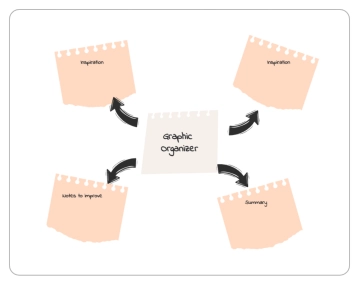Digital Marketing Strategy Plan
Prepared by: [Your Name]
Company: [Your Company Name]
Date: [Date]
I. Executive Summary
The Digital Marketing Strategy Plan provides a detailed roadmap for leveraging digital platforms to expand brand visibility, reach target audiences, and achieve measurable goals. This document highlights the strategies and analyses required to strengthen online presence across social media, search engines, email marketing, and website content. With clear objectives, actionable tactics, and a dedicated budget, this plan aims to ensure consistent brand messaging, improve engagement, and maximize returns on digital investments.
II. Market Analysis
A. Current Digital Landscape
In 2050, the digital landscape is dominated by rapid advancements in artificial intelligence, augmented reality, and machine learning, all of which shape consumer expectations and behaviors. Digital interactions are increasingly personalized, with hyper-targeted content delivered in real time based on user preferences and behavior. Understanding these trends is essential for crafting adaptable strategies that remain relevant.
Key Trends in 2050:
AI-Driven Personalization: Customized content delivered based on AI insights and predictive analytics.
Immersive Experiences: AR and VR play a major role in enhancing customer experiences.
Voice Search Optimization: Widespread adoption of voice-activated devices requires optimizing content for voice search.
B. Target Demographics
Our target demographics focus on tech-savvy consumers who frequently engage with online content and value seamless digital experiences. The main demographic segments include:
Age: 25-45 years, comprising digital-first individuals and early adopters of new technology.
Location: Urban areas with high digital infrastructure, including key cities worldwide.
Income: Middle to high income, who prioritize convenience and innovative products.
Interests: Technology, sustainability, lifestyle enhancement, and continuous learning.
C. Competitive Analysis
Analyzing competitors helps identify areas of opportunity and differentiates our brand. Key competitors and their strengths and weaknesses in the digital domain are summarized below.
Competitor | Strengths | Weaknesses |
|---|
Competitor A | Strong social media engagement and responsive customer support | Lower email open rates and limited content variation |
Competitor B | Excellent search engine ranking and optimized website | Poor mobile responsiveness and lack of interactive content |
Competitor C | Robust influencer partnerships and innovative content | Limited ad targeting capabilities and high bounce rates |
III. Goals and Objectives
The primary goal is to boost brand visibility and drive conversions through focused digital marketing efforts. Specific objectives include:
Increase website traffic by 40% within the next year (2050-2051) through organic and paid channels.
Boost social media engagement by 50% over the next two quarters, focusing on interactive and visually engaging content.
Improve email open rates by 20% within six months by refining personalization tactics and optimizing send times.
Enhance brand reputation by positioning our company as an innovative industry leader, through consistent messaging and thought leadership.
IV. Digital Marketing Tactics
A. Content Marketing
Our content strategy includes a robust content calendar that schedules daily, weekly, and monthly content across various platforms. The goal is to deliver value through educational blog posts, product updates, video tutorials, and customer testimonials. Key initiatives include:
Monthly Blog Series: Articles focused on industry trends, technological advancements, and product benefits.
Video Content: Short, impactful videos shared on social media and our website to engage and inform audiences.
User-Generated Content: Encourage customers to share experiences and feedback, enhancing brand authenticity.
B. Search Engine Optimization (SEO)
SEO efforts are crucial for improving our site’s visibility on search engines. Our key SEO strategies include:
Keyword Research: Identify high-intent keywords relevant to our industry.
On-Page Optimization: Enhance website speed, structure, and content for better user experience and SERP ranking.
Link-Building Campaign: Collaborate with industry leaders to gain backlinks and improve domain authority.
C. Pay-Per-Click (PPC) Advertising
Targeted PPC campaigns will help drive immediate traffic and increase conversions. Our PPC strategy includes:
Keyword Bidding: Focus on high-value keywords that align with our audience's intent.
Ad Copy Optimization: Craft persuasive, clear ad copy that resonates with potential customers.
Continuous Monitoring: Regular performance analysis to optimize bids and ad placements for maximum ROI.
D. Social Media Marketing
Our social media strategy involves building an engaged community and promoting content through key platforms. Tactics include:
Influencer Collaborations: Partner with reputable influencers who align with our brand values.
Interactive Campaigns: Host live Q&A sessions, polls, and giveaways to increase engagement.
Platform Diversification: Focus on emerging platforms popular in 2050 to reach a broader audience.
E. Email Marketing
Email marketing campaigns are designed to nurture leads and retain customers. Our email strategy emphasizes:
Segmentation: Segmenting subscribers based on interests, behavior, and purchasing history.
Automation: Automated workflows for welcome emails, abandoned cart reminders, and product recommendations.
Dynamic Content: Using AI-driven personalization to deliver relevant content based on user behavior.
V. Budget and Resource Allocation
The budget allocation reflects the importance of each channel in meeting our digital marketing objectives. The table below outlines the estimated budget and resources required.
Channel | Budget (per month) | Resources |
|---|
Content Marketing | $12,000 | 3 Content Creators |
SEO | $6,000 | SEO Specialist |
PPC | $9,500 | PPC Manager |
Social Media | $8,000 | Social Media Coordinator |
Email Marketing | $5,500 | Email Marketing Specialist |
VI. Measurement and Evaluation
To gauge the success of our digital marketing efforts, we will track a variety of Key Performance Indicators (KPIs), including:
Website Traffic: Using analytics to monitor changes in page views and unique visitors.
Conversion Rate: Measuring how effectively we turn website visitors into leads or customers.
Social Media Engagement: Tracking likes, shares, comments, and other engagement metrics.
Return on Investment (ROI): Calculating revenue generated in relation to digital marketing expenses.
These metrics will be reviewed monthly to adjust strategies as needed for optimal results.
VII. Implementation Timeline
A clear timeline ensures that all marketing activities proceed in an organized, timely fashion.
Activity | Start Date | End Date |
|---|
Content Creation | January 1, 2050 | June 30, 2050 |
SEO Optimization | January 1, 2050 | Ongoing |
PPC Campaigns | February 1, 2050 | December 31, 2050 |
Social Media Strategy | January 15, 2050 | July 15, 2050 |
Email Campaigns | March 1, 2050 | November 30, 2050 |
This timeline allows us to coordinate across teams and ensures each tactic receives adequate focus.
Plan Templates @ Template.net






























